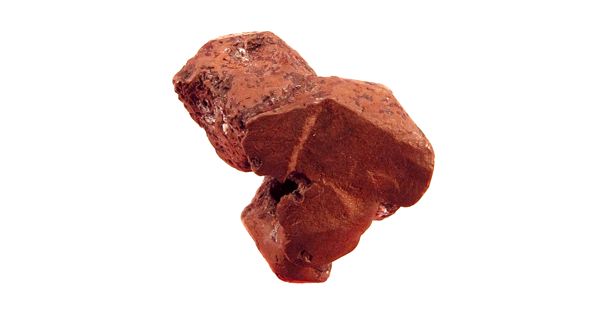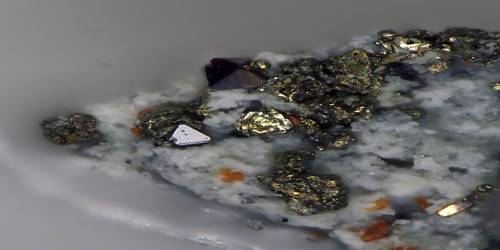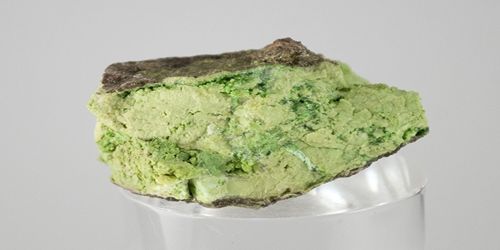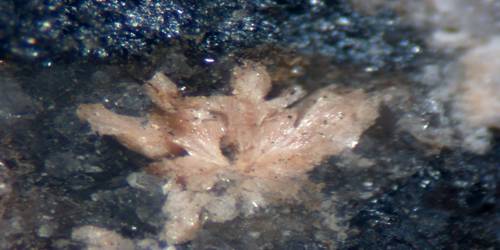Moschellandsbergite is a rare isometric mineral made up of a silver-white amalgam of mercury and silver with the chemical makeup Ag2Hg3. It is a mineral consisting of a natural alloy or amalgam of silver and mercury. These minerals are very rare matrix moschellandsbergite from a famous and important find in the mid-1800s.
It was first described in 1938 and named after Moschellandsberg Mountain near Obermoschel, Rhineland-Palatinate, Germany.
General Information
- Category: Metals and intermetallic alloys
- Formula (repeating unit): silver amalgam, Ag2Hg3
- Crystal system: Isometric
- Crystal class: Tetartoidal (23) (same H-M symbol)
- Color: white, tarnishes grey.

Moschellandsbergite – a rare isometric mineral
Properties
Moschellandsbergite appears as sub-mm crystals of a greyish-green which form rich druses coating much of a light Goethite vuggy matrix. It is a rare isometric mineral made up of a silver-white amalgam of mercury and silver.
- Cleavage: brittle
- Mohs scale hardness: 3.5
- Luster: metallic
- Specific gravity: 13.48
- Transparency: Opaque
- Streak: silver
- Tenacity: Brittle
- Cleavage: Distinct/Good
Occurrences – Probably of low-temperature hydrothermal origin.
It is considered a low-temperature hydrothermal mineral that occurs with metacinnabar, cinnabar, mercurian silver, tetrahedrite–tennantite, pyrite, sphalerite, and chalcopyrite.
Association: Metacinnabar, cinnabar, mercurian silver, tetrahedrite–tennantite, pyrite, sphalerite, chalcopyrite.
















